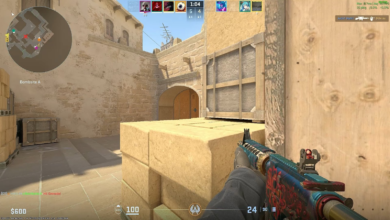Low vs High Stakes Online Roulette: What Volatility and RTP Really Mean

Online roulette has captured the imagination of countless players, offering the timeless thrill of the spinning wheel from the comfort of your own home. As you navigate the virtual casino floor, one of the first decisions you’ll encounter is whether to play low stakes or high stakes roulette. This choice impacts far more than just the size of your bets; it profoundly influences your gaming experience, especially when it comes to understanding two crucial concepts: volatility and Return to Player (RTP).
For many, the terms “volatility” and “RTP” might seem like jargon, yet understanding them is paramount to making informed decisions and managing your bankroll effectively, regardless of your experience level. Let’s delve into what these concepts truly mean in the context of low vs. high stakes online roulette, helping you to choose the path that best suits your playing style, bankroll, and risk appetite.
Low Stakes Online Roulette: Your Entry Point to the Game
Low stakes roulette tables are designed to be accessible, welcoming players with smaller bankrolls or those who are new to the game. You’ll typically find minimum bets ranging from just a few pennies to a pound or two.
Who is Low Stakes Roulette For?
Beginners: If you’re just learning the rules, understanding the different bet types (inside vs. outside), or experimenting with basic strategies like the Martingale or Fibonacci systems, low stakes tables are your ideal training ground. You can make mistakes without incurring significant financial losses.
Casual Players: For those who see online roulette primarily as a form of entertainment and want to enjoy extended playtime without breaking the bank, low stakes provide a relaxed environment.
Budget-Conscious Players: If you have a strict budget for your gambling activities, low stakes allow you to stretch your funds further, enjoying numerous spins over a longer period.
Volatility in Low Stakes Roulette
When you play at low stakes, the monetary volatility per spin is naturally lower. A small bet means a small loss if you miss, and a small win if you hit. This allows for a more gradual depletion or increase of your bankroll. However, it’s crucial to understand that the inherent game volatility of roulette itself doesn’t change.
For instance, placing an inside bet (like a straight-up bet on a single number) is always a highly volatile proposition, regardless of the stake. It offers a 35:1 payout, meaning big wins are rare but significant. An outside bet (like red/black or odd/even) is much less volatile, offering an almost 50/50 chance and a 1:1 payout. At low stakes, you can experiment with these different bet types to feel the difference in their volatility without risking much. Your bankroll will likely fluctuate more slowly, allowing you to endure losing streaks more comfortably.
RTP in Low Stakes Roulette
The Return to Player (RTP) percentage is a theoretical figure representing the percentage of all wagered money a game will pay back to players over an extended period. For European Roulette (which has a single zero), the RTP is approximately 97.3%, meaning the house edge is 2.7%. For American Roulette (with a double zero), the RTP is lower, around 94.74%, and the house edge is 5.26%.
Here’s a crucial point: The RTP of a specific roulette variant does not change with the stake size. Whether you bet £0.10 or £1,000 on a spin of European Roulette, the theoretical RTP remains 97.3%. What does change is the absolute value of that house edge. On a £1 bet, the house theoretical edge is £0.027. On a £0.10 bet, it’s just £0.0027. While these figures seem small, they illustrate that the game’s long-term mathematical advantage remains constant regardless of how much you stake. For low stakes players, the lower absolute losses make the game more forgiving over time.
High Stakes Online Roulette: The Thrill of Significant Wagers
High stakes roulette tables cater to a different breed of player – those with substantial bankrolls, a higher tolerance for risk, and a desire for potentially massive payouts. Minimum bets can range from £100 to £1,000 or even more, with maximum limits often extending into the tens of thousands.
Who is High Stakes Roulette For?
Experienced Players: If you’ve mastered various betting strategies, understand the nuances of bankroll management, and are comfortable with dramatic swings, high stakes offer a more challenging and rewarding environment. This is where you find the advanced high-stakes online roulette options designed for experienced players.
High Rollers: Players with significant disposable income who seek the adrenaline rush of large wagers and the potential for life-changing wins are naturally drawn to high stakes.
Professional Gamblers: For those who approach roulette with a disciplined, analytical mindset, aiming for consistent (though small percentage) gains on large capital, high stakes are a necessity.
Volatility in High Stakes Roulette
This is where the concept of volatility truly becomes prominent. While the inherent game volatility (e.g., straight-up bets being highly volatile) remains the same, the monetary volatility is dramatically amplified.
A single losing spin on a £1,000 bet means a £1,000 loss, a figure that could represent an entire bankroll for a low stakes player. Conversely, a winning straight-up bet on £1,000 could instantly net you £35,000. The swings are far more pronounced, and your bankroll can fluctuate wildly in a very short amount of time. Even placing outside bets like red/black at high stakes, which are inherently low volatility in terms of probability, become “high monetary volatility” due to the large sums of money involved. The psychological pressure is immense, requiring robust emotional control and a deep understanding of risk.
RTP in High Stakes Roulette
As established, the RTP percentage itself does not change regardless of the stake. A European Roulette table will always have an RTP of 97.3%, whether you’re betting £1 or £10,000. However, the absolute impact of the RTP and the house edge is significantly magnified at high stakes.
Consider that 2.7% house edge on a £10,000 bet. Theoretically, for every £10,000 you wager, the casino expects to keep £270. While it’s a long-term average and individual sessions can see you win big, the cumulative effect of the house edge becomes substantial very quickly. You need to be acutely aware that while the odds per spin are fixed, the amount of money the casino is theoretically accumulating from your wagers grows exponentially with your stake size. This is why disciplined bankroll management and understanding theoretical returns are even more critical for high stakes players.
Understanding Volatility Beyond Stakes: Bet Types
It’s vital to differentiate between the volatility of the stake and the volatility of the bet type.
High Volatility Bets (Inside Bets): Straight-up (35:1 payout), Split (17:1), Street (11:1), Corner (8:1), Six Line (5:1). These bets have a low probability of hitting but offer high payouts. They introduce significant volatility to any session, especially when combined with high stakes.
Low Volatility Bets (Outside Bets): Red/Black, Odd/Even, High/Low (1:1 payout), Dozens, Columns (2:1 payout). These bets have a much higher probability of hitting and offer lower payouts. They are designed for more consistent, smaller wins, reducing the volatility of your session.
Even a low stakes player betting £1 on a single number is engaging in a high volatility bet. Conversely, a high stakes player betting £1,000 on Red is engaging in a low probability volatility bet, but the monetary impact of that bet makes it a high-risk proposition financially.
Choosing Your Path: Bankroll, Risk, and Goals
The decision between low and high stakes roulette boils down to a few key considerations:
Your Bankroll: This is the most fundamental factor. Never play with money you cannot afford to lose. If your bankroll is limited, low stakes are the responsible choice. If you have substantial capital and are comfortable with significant fluctuations, high stakes become an option.
Your Risk Tolerance: How comfortable are you with losing money? Do you prefer slow, steady gameplay, or do you thrive on intense, high-stakes action? Your psychological makeup plays a huge role.
Your Goals: Are you playing primarily for entertainment and extended session time? Then low stakes are perfect. Are you chasing life-changing wins or treating it as a strategic investment (with inherent risk)? Then high stakes might align more with your objectives.
Your Experience Level: Beginners should always start with low stakes to learn and build confidence. Only seasoned players with a deep understanding of the game, its probabilities, and robust bankroll management strategies should consider high stakes.
The Bottom Line: Be Informed, Play Responsibly
Whether you opt for the welcoming environment of low stakes or the exhilarating challenge of high stakes, a complete understanding of volatility and RTP is your most valuable asset.
Remember:
RTP is a fixed percentage for the specific game variant and does not change with your stake. It represents the long-term theoretical return.
Volatility describes the size and frequency of swings in your bankroll. While certain bets are inherently more volatile than others, playing at high stakes significantly amplifies the monetary impact of that volatility.
Armed with this knowledge, you can make informed decisions, manage your bankroll effectively, and ultimately enhance your online roulette experience. Play smart, play responsibly, and may the wheel be ever in your favor.





